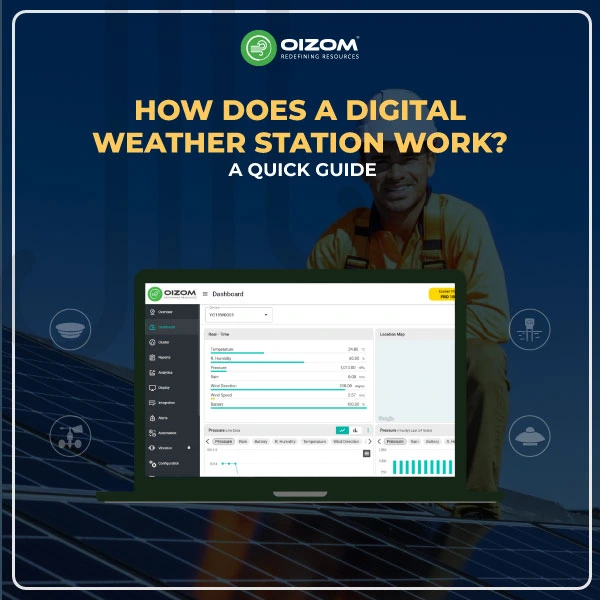It’s no secret that the quality of the air we breathe profoundly impacts our health and well-being. For those of us who spend a significant portion of our lives at work, air quality in the workplace is a crucial concern. Let’s dig into the importance of air quality monitoring in the workplace and how you can effectively implement it.
Understanding Air Quality Monitoring
Air quality monitoring involves the systematic, long-term assessment of pollutant levels by measuring the quantity and types of certain pollutants in the surrounding outdoor air. In the context of the workplace, an air quality monitoring system involves detecting and measuring a range of pollutants like dust, mould, chemicals, and other particulates that can impact employee health and productivity.
The Benefits of Workplace Air Quality Monitoring
Improving Employee Health and Well-Being
Air quality monitoring helps maintain a healthier workplace environment. Poor air quality can cause a variety of health issues, including allergies, respiratory conditions, and even cardiovascular disease. A study by Harvard T.H. Chan School of Public Health found that employees working in environments with better air quality reported 26% higher cognitive function scores.
Enhancing Productivity and Efficiency
A healthy workforce is a productive one. By minimising health risks associated with poor air quality, employees can focus better, leading to increased productivity. Research has shown that improved air quality can boost productivity by up to 10%.
Minimising Distractions and Interruptions
By keeping a close eye on air quality, companies can proactively address potential issues before they become significant problems that disrupt workflow.
Implementing an Effective Air Quality Monitoring Program
Identifying Monitoring Needs and Objectives
Begin by understanding the specific needs of your workplace. Identify the pollutants that are most relevant based on your industry and location. For example, a construction site might prioritise dust monitoring, while an office may focus more on indoor pollutants such as VOCs from paints or cleaners.
Selecting Appropriate Monitoring Devices and Sensors
After identifying what you want to monitor, below are the pointers you can consider to select an ideal air monitoring device and sensor:
- Choose high-quality sensors: Ensure the devices you select use high-quality sensors for accurate and reliable data. Oizom’s devices use advanced, high-precision sensors for monitoring environmental parameters.
- Consider the data processing capabilities: The device should have efficient data processing capabilities to handle vast amounts of environmental data. Oizom’s solutions use sophisticated algorithms and AI techniques to process and interpret data effectively.
- Check for real-time monitoring capabilities: Real-time monitoring is crucial in many cases, like emergency response or ongoing pollution control. Oizom provides real-time environmental data and alerts for critical situations.
- Ensure robust connectivity: The devices should have robust connectivity options for seamless data transfer. Oizom’s devices support various connectivity options like GSM / WiFi / LoRa / NBIoT/ Ethernet.
- Look for remote access and control: The ability to access and control devices remotely can provide great convenience. Oizom’s solutions come with a user-friendly dashboard that can be accessed remotely from anywhere.
- Device durability: The devices should be able to withstand different environmental conditions. Oizom’s devices are designed for durability and long-term outdoor use.
- Ease of integration: The devices should be easily integrated into your existing infrastructure. Oizom provides seamless integration with API access.
- Scalability of solutions: As your monitoring needs grow, the system should be scalable. Oizom’s solutions are designed for both small-scale and large-scale deployments.
- Technical support and after-sales service: Good technical support and after-sales service are essential for the effective use of monitoring devices. Oizom offers excellent customer support and services for all its products.
Remember, the selection of appropriate monitoring devices and sensors should align with your specific requirements, desired data accuracy, and budget considerations. Oizom’s solutions cover a broad spectrum of environmental monitoring needs, ensuring you have the right tools to make informed decisions for your community or business.
Placement and Distribution of Monitoring Stations
The placement and distribution of monitoring stations play a crucial role in the gathering of precise and useful data. They should be strategically situated to capture a representative sample of the environment, be it atmospheric, seismic, aquatic, or other types of monitoring. Their positioning must also take into account practical considerations, such as access for maintenance, security, and resistance to adverse conditions. Ultimately, the effective distribution of monitoring stations is a balancing act between scientific requirements, logistical considerations, and budgetary constraints.
Data Collection, Analysis, and Interpretation
Data collection, analysis, and interpretation serve as the cornerstone of any research or monitoring endeavour. Once data is collected from various sources, such as monitoring stations, it is processed and analysed to identify patterns, trends, and anomalies. Oizom’s Envizom can handle complex data sets, visualise data in understandable formats, and provide real-time actionable insights. The interpretation of this data is made easy to understand the context and implications of the identified patterns, ultimately leading to informed decision-making or further research directions.
Response Strategies for Addressing Air Quality Issues
Tackling air quality issues necessitates a comprehensive approach that combines policy reforms, technological innovations, and public awareness initiatives. One highly effective strategy within this mix is dust suppression. Now, with solutions like Oizom, automation of these dust suppression systems is possible. Users can set a predetermined threshold, and whenever air quality surpasses this limit, the integrated dust suppression system is triggered, providing an immediate response. Such innovations, along with measures like stringent regulation of pollutants, efficient waste management strategies, and the use of advanced filtration systems, hold immense potential to significantly enhance air quality. These efforts, in turn, contribute to public health improvements and foster environmental sustainability.
Available Air Quality Monitoring Solutions
Overview of Commercial Air Quality Monitoring Systems
Commercial air quality monitoring systems are essential tools for maintaining healthy environments, both indoors and outdoors. They measure a variety of pollutants and atmospheric conditions, such as particulate matter (PM), volatile organic compounds (VOCs), carbon dioxide (CO2), temperature, and humidity, providing real-time data for immediate analysis.
Features and Capabilities of Popular Monitoring Devices
Popular air quality monitoring devices offer a host of features that enhance their effectiveness:
- Real-time Data: Many devices provide real-time air quality readings, giving instant insights about the environment.
- Multiple Pollutants Detection: These devices can detect various types of pollutants, including PM2.5, PM10, CO2, CO, SO2, O3, NO2, and VOCs.
- Data Analysis & Reporting: Advanced monitoring systems offer data analysis tools, providing in-depth insights and helping in the formulation of data-driven strategies.
- Remote Monitoring & Alerts: Some systems allow for remote monitoring via mobile apps or web platforms and can send alerts when air quality levels reach hazardous levels.
- Integration: Many devices can be integrated with other systems, like HVAC, for better environmental control.
- Portability: Smaller devices are often portable, providing flexibility to monitor air quality in different locations.
Considerations for Choosing the Right System for Your Workplace
Choosing the right air monitoring system for your workplace is crucial for ensuring the health and safety of employees. Here are several considerations that you should take into account:
- You first need to identify the types of air contaminants that are likely to be present in your workplace.
- Secondly, you must ensure the accuracy and sensitivity of the air monitoring system are able to detect the presence of hazardous substances at low concentrations and provide accurate measurements.
- Thirdly, you must have a real-time air monitoring device that can give immediate alerts when air quality levels become harmful. This allows you to take swift action to mitigate any potential risks.
- Invest in an air monitoring system that is user-friendly and has an intuitive interface.
- The system should record data over time, allowing you to review and analyse trends.
- Ensure that the system complies with relevant local and national regulations concerning air quality in the workplace.
- Consider the system’s maintenance needs. It should be robust and reliable, and the supplier should provide good customer support.
- The cost of the system is also a significant factor. This includes the upfront cost of the equipment and installation, as well as ongoing costs for maintenance, calibration, and possibly subscription services for data analysis.
Best Practices for Maintaining Good Air Quality
Maintaining good air quality in outdoor workplaces can be challenging because you are dealing with larger spaces and more environmental factors that are largely beyond your control. However, here are some best practices to consider:
- Regularly monitor the air quality index in the outdoor workspace area. Use air quality sensors to check the levels of pollutants and other harmful particulates in the air.
- Enforce strict no-smoking policies within the workplace premises to reduce exposure to second-hand smoke.
- Use low-emission or electric-powered equipment whenever possible. Traditional machinery often emits harmful pollutants into the air.
- If the workplace is prone to dust, wet down the area or use dust suppressants. Provide workers with masks and other protective gear.
- Regularly service and maintain all work equipment to ensure they are running efficiently and not emitting excessive pollutants.
- Place workstations as far away as possible from high-emission sources such as exhaust vents, heavy machinery, etc.
- Encourage green spaces around the workplace. Trees and plants can absorb certain pollutants and help to improve the overall air quality.
- Regularly train and educate employees on the importance of air quality and measures to protect themselves, such as wearing appropriate protective gear.
- Have contingency plans for situations with poor air quality, such as smog or haze, including moving workers indoors where possible, providing suitable protective gear, or temporarily halting work.
- Remember, the health and safety of your workforce are paramount, and maintaining good air quality in your outdoor workspace is a vital part of that.
Future Trends in Workplace Air Quality Monitoring
Advancements in Sensor Technology and Data Analytics
With advancements in technology, we can expect even more precise and reliable sensors. Improved data analytics will provide deeper insights and predictive capabilities.
Integration with the Internet of Things (IoT) and Smart Building Systems
As smart buildings become more common, expect tighter integration with air quality monitoring. This could allow automatic adjustments of HVAC systems based on air quality readings.
Predictive Analytics and Real-time Air Quality Alerts
Future systems will not only alert when issues occur but predict them before they happen, allowing proactive responses.
Emerging Regulations and Standards
As awareness of air quality issues grows, expect stricter regulations and standards to emerge, making monitoring even more critical.
Wrapping Up
In today’s world, maintaining good air quality in the workplace is not just an option—it’s a necessity. By understanding the importance of air quality monitoring and effectively implementing it, we can create healthier, more productive workplaces and a brighter future for all.
Oizom can help you make your workplace more sustainable and healthy for your employees. Get in touch with us today to know how.






